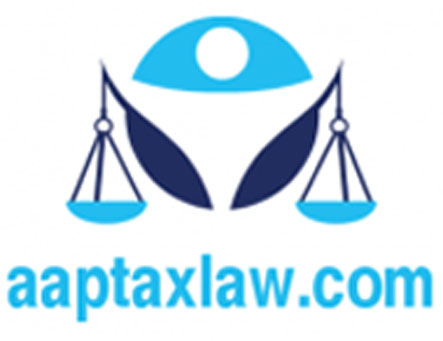

International Telecommunication Union, also known as ITU is a specialized agency of United Nations for information and communication technologies. ITU allocates global radio spectrum and satellite orbits to promote and facilitate international connectivity and networking. ITU also lays down international standards for technology usage to improve connectivity and technology. It has 3 main aims which are:
1. Achieving international cooperation for development and proper use of all types of international telecommunications.
2. Ensuring technical facilities to raise efficiency in telecommunication services and increase their utility.
3. Harmonizing activities of the member states to achieve the above mentioned objectives.
International Telecommunication Union was earlier known as International Telegraph Union and was established on 17th May, 1865. It is headquartered in Geneva, Switzerland and currently has 193 member states and membership taken by many businesses, academic institutions and international and regional organizations for working together which are called Sector Members. During its reconstruction and restructuring in the Plenipotentiary Conference of 1992, ITUís work was divided into 3 main sectors which are explained as follows:
1. Radio Communication
Radio Communication sector of ITU is also known as ITU-R which was established in 1927 as International Radio Consultative Committee. ITUĖR manages and monitors international radio frequency spectrum and satellite orbit resources.
2. Standardization
Standardization sector of ITU was established in 1956 as International Telephone and Telegraph Consultative Committee and this sector performs the main function of ITU which is, setting standards for all global communications except radio technology. The Standardization work is undertaken by Study Groups, such as Study Group 13 on Networks and Study Group 16 on Multimedia. The apex body of the Study Groups is the quadrennial World Telecommunication Standardization Assembly. New work areas can be developed in Focus Groups, such as the Focus Group on Machine Learning for 5G and the ITU-WHO Focus Group on Artificial Intelligence for Health. This sector of ITU is also called ITU-T.
3. Development
Development sector of ITU focuses on sustainable, equitable and affordable access to information and communication technologies. This department is also known as ITU-D which is the secretariat for Broadband Commission for Sustainable Development.
Lastly, ITU Telecom sector organizes events for the telecom community organizations and institutions.
ITU has gone through tremendous changes in its structure throughout these years and now has Constitution and Convention of International Telecommunication Union to be abided by all its members. ITU also has, Optional Protocol on the settlement of disputes, the Decisions, Resolutions and Recommendations in force, as well as the General Rules of Conferences, Assemblies and Meetings of the Union.
ITU is governed by its Plenipotentiary Conference which comprises of representation from all 193 members which meets once in every 4 years to decide long term goals, plans, direction and activities for ITU for the next four years. It also has a 48 member Council (elected by Plenipotentiary Council) which acts as ITUís governing body. Council oversees smooth operation of the Union, implementation of policies and plans laid down by Plenipotentiary Council, address broad telecommunication issues etc.
Secretariat of International Telecommunication Union consists of a
Secretary General of ITU elected by Plenipotentiary Council for renewable
four year tenure. Secretary General oversees the daily operations, manages
the staff of ITU and acts as the legal representative of ITU.
ITU was one of the UN agencies in charge for organizing the World Summit on
the Information Society (WSIS), in collaboration with UNESCO, UNCTAD and
UNDP. The Summit was held as two conferences in 2003 and 2005 in Geneva and
Tunis, respectively, with the aim of bridging the digital divide.
The current regulatory configuration was based on voice telecommunications, when the Internet was still in its pre mature stage. In 1988, telecommunications operated under regulated monopolies in most countries. As the Internet has grown, organizations such as ICANN have come into existence to manage key resources such as Internet addresses and Domain Names.
Law General Knowledge Topics
1. Writ Petitions Article 32 Supreme Court and Article 226 to High Court
2. CrPC Complaint, FIR, Enquiry, Police Report, Bail, Summon and Quashing
2.1 Superdari, Release Property, buying stolen property, Pre and Post Arrest
2.2 Right of accused, Supreme Court Guideline of D K Basu case
2.3 Procedure for Investigation by Police, Power to call Witness, Expenses
2.4 Mediation in Criminal Cases, trial, Witness cross examination, Discharge
2.5 Criminal Appeal, Limitation, Additional Evidence, Revision, Compounding
3. CPC Suit, contents of Pleading, evidence, necessary proper party, claim
4. Consumer Protection Act 2019 with latest pecuniary jurisdiction
5. Section 138 of Negotiable Instruments Act and Order XXXVIII CPC
6. Protection of women from Domestic Violence, Relief, Protection Order
7. Custody of Children, Guardianship, Judgments of Supreme Court, HC
8. Maintenance of Parents and Senior Citizens Act 2007 provisions
9. Motor Vehicles amendment Act 2019, Insurance, Punishments
10. Food Safety and Standards Act 2006, adulterant, additive, hazard
10.1 Penalties and Punishments under Food Safety and Standards Act 2006
11. Legal Metrology Act 2009, dealer, manufacturer, protection, sale
12. Legal General Knowledge for Lawyers, students and litigants
13. Law GK for entrance test, law students and legal practitioners
14. Law General Knowledge for faculties, students, professionals and litigants
15. Common terms in Law General Knowledge of Legal quotes and words
16. Law Questions, Answers. Legal issues and solutions as per acts and law
17. First in India - President, Chief Justice, Vice President, PM, Deputy PM etc
18. Law General Knowledge for Legal Profession and entrance test ECOSOC - United Nations Economic and Social Council
UN General Assembly - United Nations
UN Secretariat Appointment, functions
International Court of Justice of UN
International Bank of Reconstruction and Development
FAO - Food and Agriculture Organization
ICAO - International Civil Aviation Organization
ICSID International Centre for Settlement of Investment Disputes
IDA - International Development Association
IFC - International Finance Corporation
IMO International Maritime Organization
ITU - International Telecommunication Union
MIGA - Multilateral Investment Guarantee Agency
UNESCO - United Nations Educational, Scientific and Cultural Organization